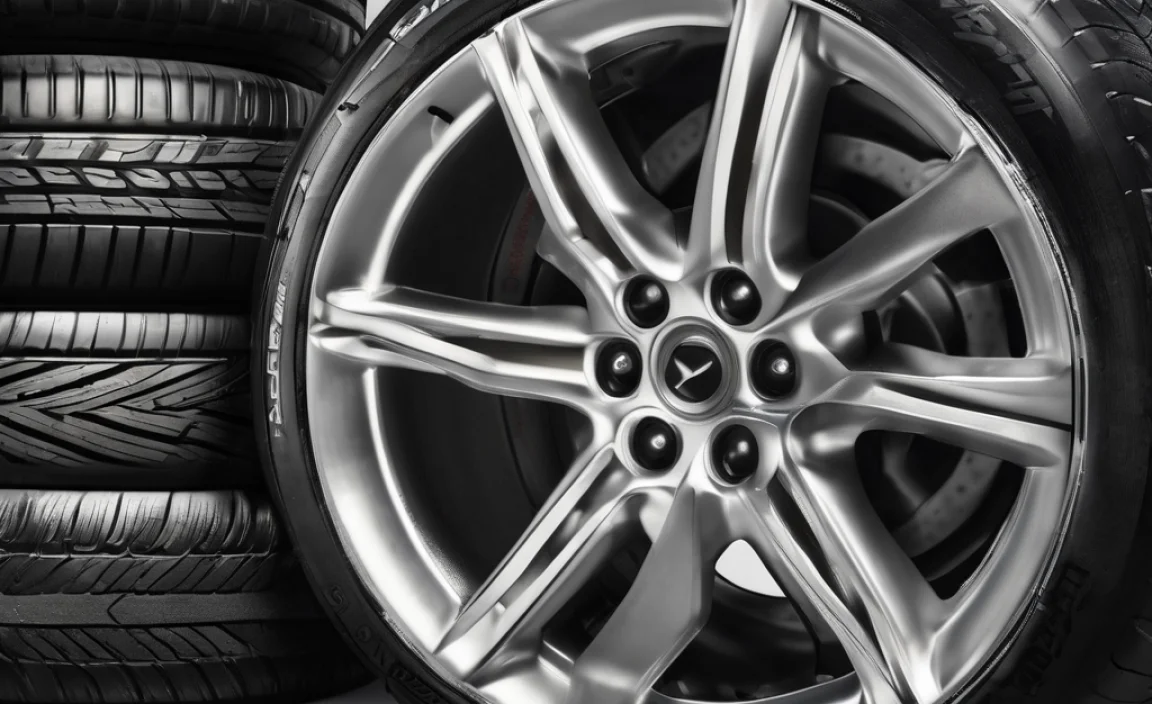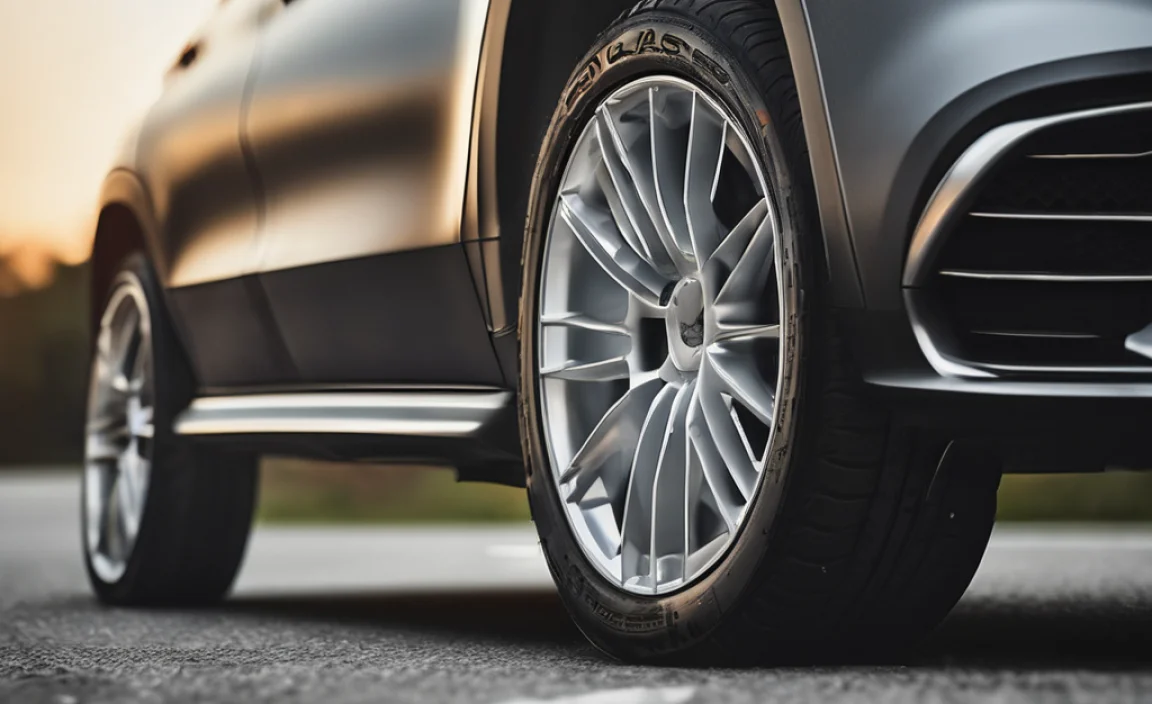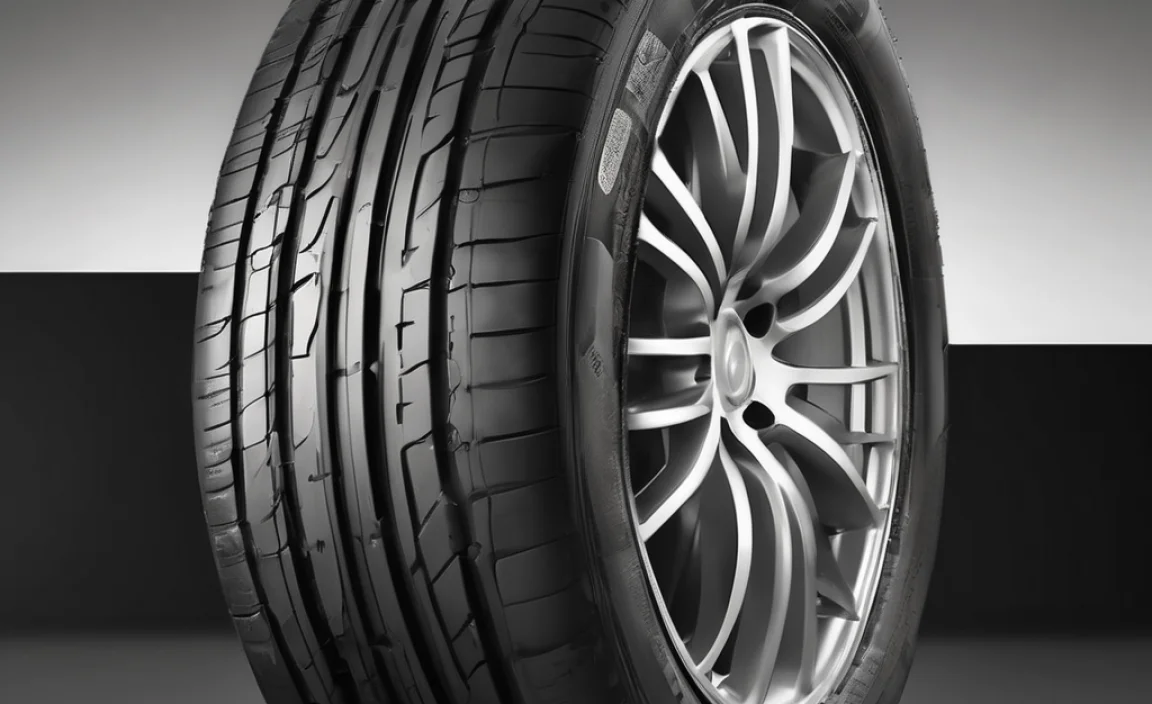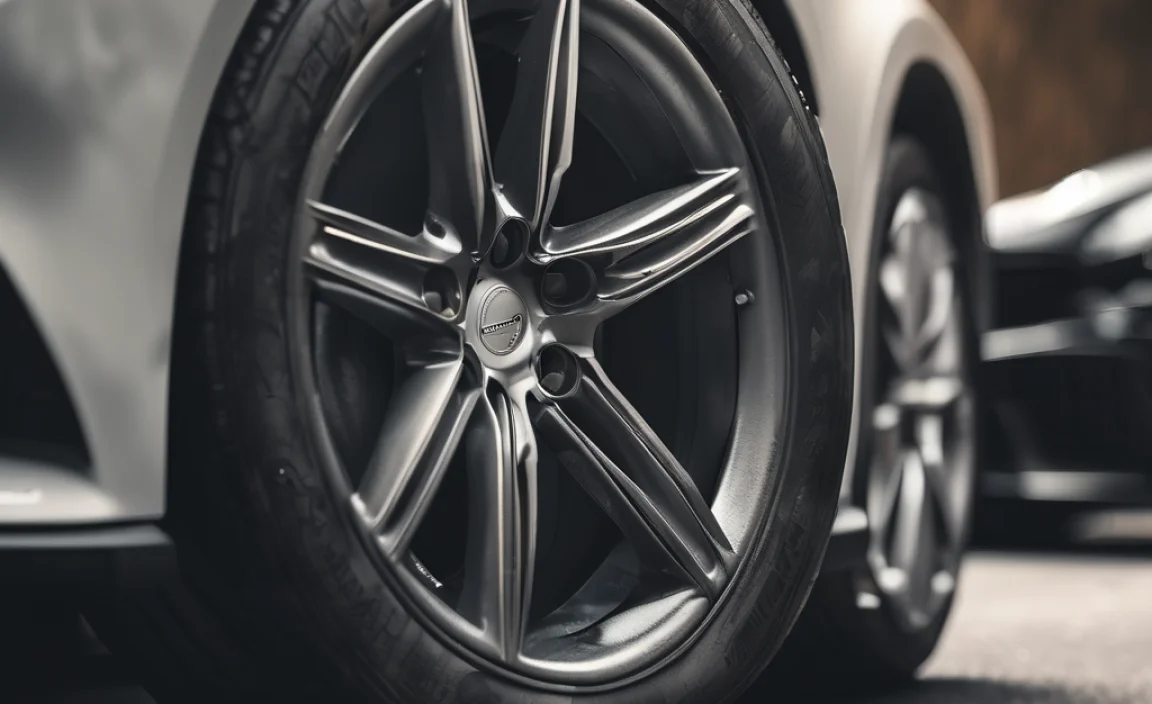GLA-Class Tyre Size & Wheels: Get It Right for a Smoother, Safer Ride! This guide breaks down finding the perfect tyre size and wheel options for your Mercedes-Benz GLA, making it easy to keep your ride performing at its best. Understand key specs, options, and maintenance tips to drive with confidence.
Hey there, GLA owners! Ever looked at your tyres and wondered if they’re exactly right? You’re not alone. Choosing the correct tyre size and wheels for your Mercedes-Benz GLA is super important. It affects how your car drives, how safe you are on the road, and even how it looks. Getting it wrong can lead to poor handling, faster wear, and even damage. But don’t worry! This guide is here to make everything crystal clear. We’ll help you understand what all those numbers and letters mean, explore your options, and ensure you make the best choices for your GLA.
Why Your GLA-Class Tyre Size & Wheels Matter

Your tyres are the only part of your car that touches the road. Think about that for a second! This direct connection means they play a huge role in everything from your grip on wet mornings to how smoothly you glide over bumps. When you have the right tyre size and complementary wheels, you’re setting your GLA up for success. It means:
- Optimal Performance: Your car’s systems, like ABS and stability control, are designed for specific tyre sizes. Using the right ones ensures they work as intended.
- Safety First: Proper grip, balanced handling, and effective braking all depend on using the correct tyre specifications.
- Comfort and Quiet: The right tyres absorb road imperfections, giving you a more comfortable and quieter drive.
- Fuel Efficiency: Incorrect tyre sizes can increase rolling resistance, using up more fuel than necessary.
- Longevity: Using the correct size prevents uneven wear on your tyres and other suspension components, saving you money in the long run.
So, understanding your GLA-Class tyre size & wheels isn’t just about aesthetics; it’s fundamental to your car’s performance and your safety. Let’s dive into how to find that information.
Decoding Your GLA-Class Tyre Size: What Do Those Numbers Mean?

You’ve probably seen a string of numbers and letters on the sidewall of your current tyres, like “235/55 R18 100V”. It looks like a secret code, but it’s actually a straightforward guide to your tyre’s specifications. Let’s break it down:
Imagine your tyre size is 235/55 R18 100V.
- 235: Tyre Width (Section Width)
This number, in millimeters, indicates the width of the tyre from one sidewall to the other (not including any decorative elements). A wider tyre generally offers more grip, while a narrower one can be more fuel-efficient. - 55: Aspect Ratio
This is a percentage that represents the tyre’s sidewall height in relation to its width. In our example, 55% of 235mm means the sidewall height is approximately 129.25mm. A lower aspect ratio means a shorter, stiffer sidewall, often found on sportier vehicles for better handling. - R: Radial Construction
This “R” stands for Radial, which is the standard construction for almost all modern car tyres. It means the internal fabric plies are laid perpendicular to the direction of travel. - 18: Wheel Diameter
This number, in inches, specifies the diameter of the wheel that the tyre is designed to fit. So, an “18” means this tyre needs to be mounted on an 18-inch wheel rim. - 100: Load Index
This is a numerical code that corresponds to the maximum weight each tyre can support when properly inflated. A load index of 100 means the tyre can support 800kg. You’ll need to ensure this index meets or exceeds your vehicle’s requirements. You can find a load index chart online to see what each number means. Check out resources like NHTSA’s information on tyres for more on these standards. - V: Speed Rating
This letter indicates the maximum speed at which the tyre can consistently carry a load corresponding to its load index. A “V” rating means the tyre is capable of speeds up to 149 mph (240 km/h). Higher speed ratings generally correspond to tyres designed for better performance and handling.
Knowing these numbers is your first step to selecting the right GLA-Class tyre size & wheels.
Where to Find Your GLA-Class’s Recommended Tyre Size

Mercedes-Benz is very specific about the tyre sizes that are safe and optimal for each model. Here’s where you can easily find this crucial information for your GLA:
- Driver’s Side Doorjamb Sticker: This is the most common place! Open your driver’s side door and look for a sticker on the frame (the B-pillar). It will clearly list the original equipment (OE) tyre sizes and recommended inflation pressures.
- Owner’s Manual: Your owner’s manual is a treasure trove of information. It will have a dedicated section on wheels and tyres, detailing all the approved sizes and their specifications.
- Fuel Filler Flap: Sometimes, manufacturers place a tyre pressure and size sticker inside the fuel filler door. It’s worth a look!
- Glove Compartment: While less common for tyre sizes, check your glove compartment for documentation that might contain this info.
- Online Resources: Reputable tyre retailers and Mercedes-Benz official websites often have tools where you can enter your GLA’s model and year to find recommended specifications.
It’s always best to refer to your vehicle’s specific documentation to ensure you’re selecting the exact GLA-Class tyre size & wheels that Mercedes-Benz intended.
Understanding GLA-Class Wheel Specifications

Just like tyres, wheels also have specific measurements that determine fitment. When you’re looking at wheels for your GLA, you’ll encounter terms like bolt pattern, offset, and centre bore. Let’s demystify them:
Bolt Pattern (PCD)
This refers to the number of lug holes and the diameter of the circle on which those holes are spaced. For Mercedes-Benz vehicles, including the GLA, common bolt patterns are 5×112. This means there are 5 lug bolts, and the distance across the circle they form is 112mm. Using the correct bolt pattern is non-negotiable; the wheel simply won’t bolt onto your car if it’s wrong.
Offset
Wheel offset is the distance from the mounting surface of the wheel (where it meets the hub) to the centerline of the wheel. It can be positive, negative, or zero. For most modern front-wheel-drive and all-wheel-drive cars like the GLA, you’ll typically see a positive offset. A positive offset means the wheel sits further inwards towards the car’s body. The correct offset ensures your wheels and tyres don’t rub against the suspension components or the fenders. Sticking to the OE offset or a very close approximation is crucial for proper handling and to avoid premature wear on bearings and suspension parts.
Centre Bore
This is the diameter of the hole in the center of the wheel that allows it to be seated squarely on the vehicle’s hub. Mercedes-Benz vehicles usually have a specific centre bore size. To compensate for slight variations or to ensure a perfect fit, wheels often come with hub-centric rings. These rings fit into the wheel’s centre bore and precisely match the vehicle’s hub diameter, ensuring the wheel is perfectly centered. For many Mercedes-Benz models, the centre bore is 66.5mm.
Common GLA-Class Tyre Sizes and Wheel Options

The Mercedes-Benz GLA has been offered with a variety of tyre and wheel sizes over the years and across different trims. Here’s a general overview of common sizes you might encounter:
It’s important to note that these are examples and your specific vehicle might have different OE fitments. Always confirm with your car’s documentation.
| GLA Model/Trim (Example) | Common OE Tyre Size | Range of OE Wheel Sizes (Inches) | Common Wheel Bolt Pattern |
|---|---|---|---|
| GLA 200 / GLA 250 (Standard Trims) | 235/55 R18 | 18″, 19″ | 5×112 |
| GLA 250 (Sportier Package) | 235/50 R19 | 19″ | 5×112 |
| AMG GLA 35 / AMG GLA 45 | 235/55 R18 (Winter/Standard) or 235/50 R19 (Performance) | 18″, 19″, 20″ | 5×112 |
| GLA Vehicles (Electric) | 235/55 R18 or 235/50 R19 | 18″, 19″ | 5×112 |
When considering aftermarket wheels, you have a lot of choices in terms of style, finish, and material. However, remember to stick as closely as possible to the original wheel specifications (especially bolt pattern, offset, and centre bore) to maintain safety and performance.
Optimising Your GLA-Class Tyre Size & Wheels
While sticking to the OE specifications is the safest bet, some owners like to explore variations. Here’s how you can think about it:
Going Up a Wheel Size
Many GLA owners opt to upgrade to larger wheels, often from 18-inch to 19-inch or even 20-inch. If you do this, you must maintain a similar overall tyre diameter to ensure your speedometer is accurate and your Electronic Stability Program (ESP) systems function correctly. This means if you increase the wheel diameter, the tyre’s aspect ratio will typically need to decrease.
Example:
- Original: 235/55 R18 (Overall Diameter ≈ 28.2 inches)
- Upgrade: 235/50 R19 (Overall Diameter ≈ 28.2 inches)
- Upgrade: 235/45 R20 (Overall Diameter ≈ 28.4 inches)
You can use online tyre calculators to help you find tyre sizes that keep the overall diameter within a close tolerance (typically ± 3%) of the original specification. For instance, TyreSizeCalculator.com is a useful tool.
Benefits of Larger Wheels/Lower Profile Tyres:
- Aesthetics: Often look sportier and fill the wheel arches better.
- Handling: Lower profile tyres (shorter sidewalls) reduce tyre flex, leading to sharper steering response and better cornering stability.
Drawbacks of Larger Wheels/Lower Profile Tyres:
- Comfort: Less sidewall means less cushioning, resulting in a firmer ride and can transmit more road imperfections.
- Wheel/Tyre Damage: More susceptible to damage from potholes or curbs.
- Cost: Larger wheels and lower profile tyres are generally more expensive to purchase and replace.
- Tread Wear: Can sometimes lead to faster tyre wear if not maintained properly or if driving conditions are harsh.
Going Down a Wheel Size (e.g., for Winter Tyres)
It’s common and often recommended to use smaller wheels for winter tyres. This is because:
- Tyre Cost: Winter tyres in a smaller size are typically less expensive.
- Ride Comfort: Higher profile tyres (taller sidewalls) offer better ride comfort and resilience against cold, potentially icy roads.
- Weight: Smaller wheels are usually lighter, which can be beneficial in winter conditions.
Again, the key is maintaining the overall tyre diameter close to the original. For example, you might switch from 19-inch wheels with 235/50 R19 tyres to 17-inch wheels with 235/65 R17 tyres. Both have a similar overall diameter (around 28.2 inches).
Tyre Maintenance for Your GLA
Once you’ve got the right GLA-Class tyre size & wheels, keeping them in good condition is essential for safety and longevity:
- Regular Pressure Checks: Check your tyre pressures at least once a month, and before long journeys. Use the recommended pressures found on your driver’s doorjamb sticker. Over- or under-inflated tyres can lead to uneven wear, poor handling, and reduced fuel efficiency. A reliable tyre pressure gauge is a must-have tool.
- Tread Depth: Tyres have a minimum legal tread depth (often 1.6mm in many regions). Regularly inspect your tyres for wear. Uneven wear patterns can indicate alignment or pressure issues. You can use a tread depth gauge or a simple coin test.
- Rotation: Rotate your tyres every 5,000-7,500 miles (8,000-12,000 km). This helps ensure they wear evenly, extending their life. If you have directional tyres, they can only be moved from front to back on the same side of the car.
- Balancing: Wheels and tyres need to be balanced when new tyres are fitted or if you notice vibration at speed. Unbalanced wheels can cause vibration and uneven tyre wear.
- Alignment: Have your wheel alignment checked periodically, especially if you hit a pothole, curb, or notice your steering pulling to one side. Misaligned wheels cause rapid and uneven tyre wear.
- Cleaning: Clean your wheels regularly. While this is mainly cosmetic, it also allows you to spot any potential damage, such as cracks or corrosion, early on. For robust cleaning, consider dedicated wheel cleaners.
Proper maintenance ensures your chosen GLA-Class tyre size & wheels perform optimally and safely.
Buying New Tyres and Wheels: What to Look For
Whether you’re replacing worn-out tyres or upgrading your wheels, here are some tips:
Tyres:
- Match OE Specs: Always prioritise matching the OE tyre size, load index, and speed rating specified by Mercedes-Benz.
- Tyre Type: Consider your driving conditions.
- All-Season Tyres: A good balance for most climates, offering acceptable performance in dry, wet, and light snow conditions.
- Summer Tyres: Offer superior grip and handling in warm, dry, and wet conditions but perform poorly in cold or snow.
- Winter Tyres: Designed for temperatures below 7°C (45°F), providing excellent grip in snow, ice, and cold conditions.
- Run-Flat Tyres: Some GLA models come with run-flat tyres, which allow you to drive for a limited distance at reduced speed after a puncture. Replacing them with standard tyres may require you to carry a spare and repair kit.
- Brand Reputation: Stick with reputable tyre manufacturers known for quality and safety.
- The Four-Tyre Rule: Always replace tyres in sets of four. Fitting only two new tyres can upset the balance and handling of your car, especially if the old tyres have significantly different tread depths.
Wheels:
- Material:
- Alloy Wheels: Lightweight, strong, and come in countless designs. They are the most popular choice.
- Steel Wheels: Heavier but very durable and often less expensive. Typically used for winter tyre setups or on base models.
- Fitment: Ensure the bolt pattern, offset, and centre bore (or use of appropriate hub-centric rings) match your GLA’s specifications precisely.
- Quality: Invest in reputable brands. Cheap, unbranded wheels might look good but can be structurally unsound, posing a significant safety risk. For more on wheel construction, the SEMA Wheel and Tire Primer offers great insights.
Frequently Asked Questions (FAQs) about GLA-Class Tyre Size & Wheels
Q1: Can I fit different sized wheels on my GLA-Class?
Yes, but with caution. You can generally fit larger or smaller wheels as long as the overall tyre diameter remains very close to the original specification. This ensures your speedometer and safety systems remain